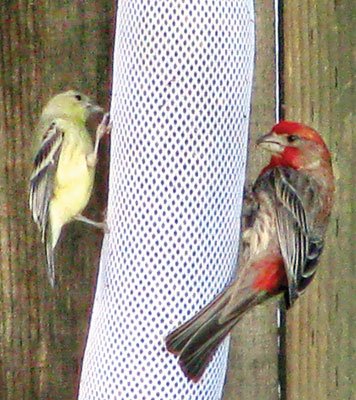One of the most enjoyable aspects of writing this column is the
give and take with readers, who send me everything from thank you
notes to corrections to advice on what my next column should be.
Every now and then I like to share a well-written letter from a
reader.
One of the most enjoyable aspects of writing this column is the give and take with readers, who send me everything from thank you notes to corrections to advice on what my next column should be. Every now and then I like to share a well-written letter from a reader.
On May 7, I wrote a story about Marge Wentworth, a woman who established deep roots throughout our community through her lifetime of service to others. I received this note from a fellow volunteer of hers:
“Hi Kat – thanks for the great story on Marge. However, her service as one of the sewing ladies was with Saint Louise Regional Hospital, not St. Teresa’s. These ‘sewing ladies,’ as we know them, meet every Wednesday morning to sew bears as a comfort to give to children who come in for blood tests or for other reasons. They also make Christmas stockings to send newborns home in during the month of December. They have a long history, which I believe goes back to the old ‘Wheeler Hospital’ days. I do enjoy your articles – you write with a lot of feeling and on fun things. In this age of news reporting, your articles are a ‘breath of fresh air.’ Thanks. Roxie Thomas, volunteer at Saint Louise Regional Hospital.”
Thank you, Roxie, for setting me straight in such a kind and thoughtful way. I want to apologize to all the Saint Louise Regional Hospital volunteers I inadvertently snubbed by not giving proper credit for their amazing efforts on behalf of our community. To see 15 of you show up in uniform at Marge’s memorial was the kind of moving tribute that brought tears to the eyes of many. Thank you for all you do.
As I eat crow, my only excuse is that I have been slightly delirious for several weeks while suffering from some kind of nasty flu virus brought home by my husband from San Jose City Hall (he doesn’t need to share everything with me!). I have not been able to get out and about to interview folks the way I normally do. In fact, I’ve been stuck at home, and the only thing that has made it slightly more bearable has been sitting out on the patio in my back yard. Taking the time to actually stop and smell the roses – and to listen to the rich, highly complex springtime melodies of our local songbirds has been most therapeutic and healing for me.
I put up a bird feeder made by local bird enthusiast Dick Freitas, who ingeniously designed a funnel for filling the feeder by cutting a plastic milk bottle in two, and the birds are flocking to it. I like the way he gave the feeder an overhang by making the upper part of the feeder a bit wider than the bottom, so that when it rains, the bird seed doesn’t get wet.
I am no expert yet, but I purposely chose bird seed designed to attract small songbirds, such as colorful finches, and I often spy the vivid yellow plumage of the American Goldfinch. Sometimes called the “wild canary,” it looks like an escapee from a tropical forest. But it is one of the most common backyard birds attracted by tiny thistle seeds in particular.
I hung a mesh sock from a tree that is filled with nothing but thistle seed, and the smaller songbirds favor it over the conventional bird feeder. The tiny birds hang from the sides of the sock (often upside down or sideways) and peck to get the seeds inside, and I will often spot multiple birds feeding at once in shades of blue, red, purple and yellow.
One day while hanging out in the backyard, I was lucky enough to spot a bird known as the yellow-rumped warbler, a little songster with a bright yellow rump-patch, also known as the “butter butt.” It turns out that in our area, it is the males who have the most vividly colorful plumage and vibrant song talent, which makes them irresistible to the female species.
A pair of softly cooing mourning doves comes to eat the bird seed that falls to the ground – they are the clean-up crew. And the local squirrel drops in to try to snatch up any stray seeds or nuts he can find. My bird feeders hang from hooks on long skinny poles or from branches of trees, and Mr. Squirrel has not figured out how to get to them. He climbs up on the bird bath, leans out to grab a hold of the butterfly bush for leverage, and then stretches out as far as he can towards the bird feeder, but so far, no cigar.
As I laugh at his antics, I realize the upside to this illness – it has forced me to stop and smell the roses – and listen to the songbirds. Thanks to the purple finches, wild canaries and butter butts, I am on the mend.
For photos to help you identify backyard birds, go to www.dpughphoto.com/birds.htm













